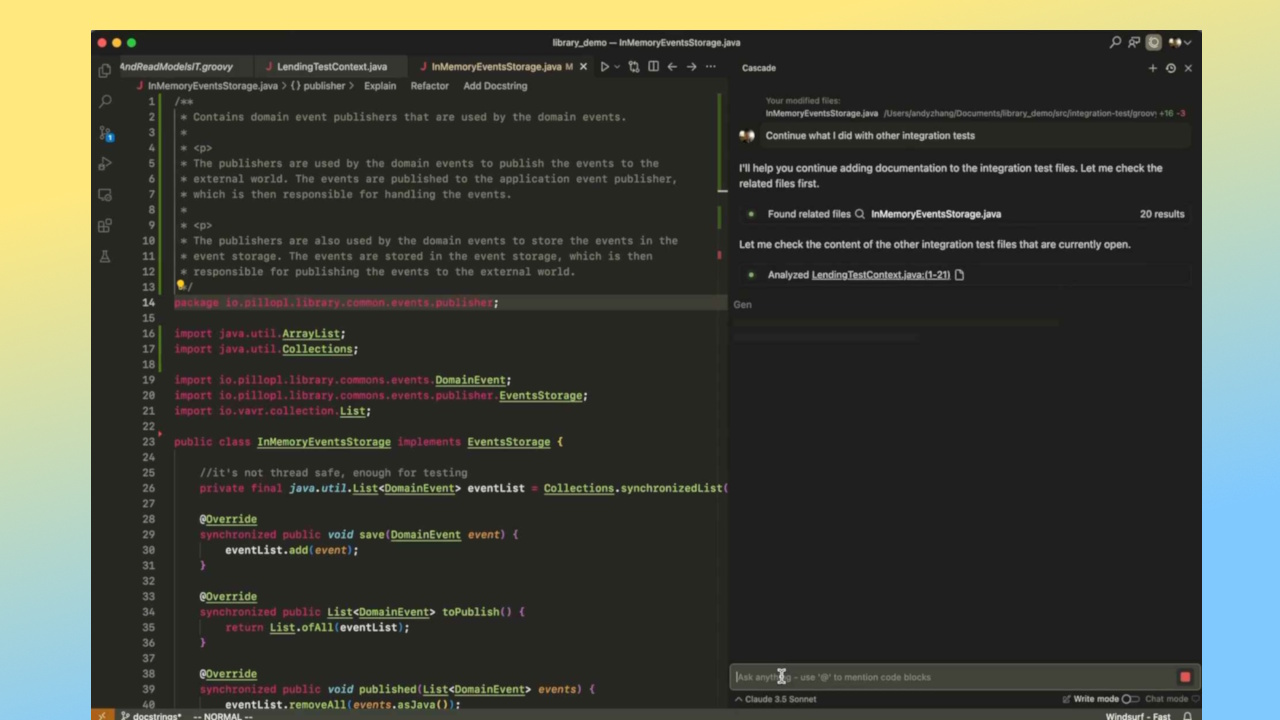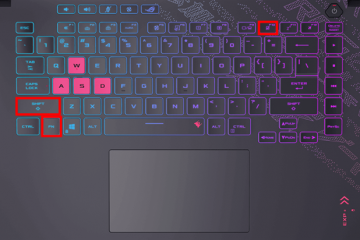Sa isang ligaw na linggo na nanginginig ang Silicon Valley, ang startup ng AI coding na Windsurf ay naging sentro ng isang corporate thriller. Its planned $3 billion acquisition by OpenAI collapsed in mid-July, reportedly due to a veto from partner Microsoft and strategic pressure from model-provider Anthropic.
This chaos allowed Google to poach Windsurf’s founders and key staff in a controversial $2.4 billion deal, leaving most employees behind. Ang alamat ay nagtapos sa karibal na mga lab ng cognition na nakakakuha ng natitirang kumpanya. The story exposes the brutal AI talent wars and a crisis of founder loyalty.
The Ascent: A $3 Billion Promise Built on Innovation
To understand the chaos, one must first appreciate the ascent. Ang paglalakbay ng Windsurf ay nagsimula noong 2021, nang ang mga nagtapos sa MIT na sina Varun Mohan at Douglas Chen ay nagtatag ng exafunction, isang startup na nakatuon sa pag-optimize ng GPU. They soon pivoted to the booming AI coding market, launching a tool named Codeium that quickly gained traction, securing a total of $243 million from top-tier investors like Kleiner Perkins and Founders Fund.

In late 2024, following a Series C round that valued the company at Higit sa $ 1.25 bilyon , isang pangunahing rebrand mula sa codeium hanggang windsurf ay inihayag. Hindi lamang ito pagbabago ng pangalan; Ito ay minarkahan ng isang madiskarteng paglipat upang makipagkumpetensya nang direkta sa tumataas na mga bituin tulad ng Cursor sa pamamagitan ng paglulunsad ng isang buong kapaligiran, AI-Native Development Environment. Windsurf aggressively undercut its rival on price, positioning itself as a powerful alternative for developers.
Crucially, Windsurf cultivated a unique market position. Habang ang mga kakumpitensya ay sikat sa mga indibidwal na inhinyero, ang Windsurf ay nakakuha ng makabuluhang traksyon sa mga customer ng negosyo. Nagtayo ito ng isang reputasyon sa mga high-level na tagagawa ng desisyon, na sinuntok nang mas mataas ang timbang nito sa mga lupon ng korporasyon. This enterprise-first focus would prove to be a key element of its immense valuation.
By early 2025, the company was hitting escape velocity. Ang taunang paulit-ulit na kita nito ay naiulat na nag-skyrock mula sa $ 40 milyon hanggang $ 100 milyon sa loob lamang ng ilang buwan. This commercial momentum was solidified in March when Windsurf became the first AI coding tool to achieve FedRamp High certification, a critical approval for lucrative U.S. government contracts.
This stunning trajectory culminated in May 2025, when OpenAI reached a Ang tiyak na kasunduan upang makakuha ng Windsurf para sa humigit-kumulang na $ 3 bilyon sa isang all-cash deal. It was set to be OpenAI’s largest acquisition ever, a clear strategic shot at Microsoft’s GitHub Copilot and a bid to instantly acquire a mature, enterprise-ready business with deep market penetration.
The Collapse: A Perfect Storm of Sabotage and Betrayal
The ink on the agreement was barely dry when the dream of a landmark exit began to unravel. Natagpuan ni Windsurf ang sarili na nahuli sa isang dalawang harapan na digmaan, na pinisil ng isang tagagawa ng karibal na modelo at ang sariling potensyal na kasosyo ng magulang. The first blow came from Anthropic, which began withdrawing its powerful Claude model from the Windsurf platform during the OpenAI exclusivity period.
This was a calculated act of corporate sabotage. Ang layunin ay hindi lamang upang maiwasan ang isang katunggali mula sa paggamit ng tech nito; Ito ay upang tanggihan ang pag-access ng OpenAi sa isang stream ng napakahalagang data ng pagsasanay sa AI. Every developer interaction provides correction and reward signals, and Anthropic was determined to cut off that flow.
As co-founder Jared Kaplan succinctly put it, “it would be odd for us to sell Claude to OpenAI.”The move actively degraded Windsurf’s product, forcing users to migrate and eroding the value of the very asset OpenAI was trying to buy.
The second, fatal blow came from within the alliance. Noong unang bahagi ng Hunyo, ang mga negosasyon ay tumama sa isang pangunahing snag sa mga karapatan ng IP ng Microsoft. Sa ilalim ng kanilang kasunduan sa 2023, ang Microsoft ay may mga karapatan sa lahat ng teknolohiya na nakuha ng OpenAI. When OpenAI reportedly tried to carve out an exception for Windsurf—a direct competitor to Microsoft’s own GitHub Copilot—Satya Nadella refused to budge.
The conflict exposed the “soft separation”and growing tensions between the two giants. Ang Openai ay nabaluktot ang mga pakpak nito, ngunit ginanap ng Microsoft ang ligal na mataas na lupa. The stalemate dragged on until July 11, when the exclusivity period expired and the $3 billion deal officially collapsed.
With Windsurf vulnerable, Google executed a stunningly ruthless move that same day. Inanunsyo nito ang isang $ 2.4 bilyong”reverse acquihire,”isang istraktura na malamang na idinisenyo upang maiwasan ang pagsisiyasat ng FTC antitrust. Hindi binibili ng Google ang kumpanya; Ito ay poaching ang kaluluwa nito. Founders Mohan and Chen, along with about 40 of their best R&D staff, were hired to join Google DeepMind.
For the founders and the chosen few, it was a massive payday. Para sa natitirang 250-plus empleyado ng Windsurf, ang balita ay isang cataclysm. Ang kanilang equity, na isang beses na nagkakahalaga ng pagbabago sa buhay, ay epektibong naibigay na walang halaga sa magdamag. They were left with a company stripped of its leadership and top talent, holding only the remaining cash in the bank and a non-exclusive license to their own technology.
The move sparked a fierce social media backlash as details of the deal leaked, with many accusing the founders of a profound betrayal that violated Silicon Valley’s unwritten code of honor and abandoned the very people who had built the company’s value.
ligaw na aralin sa debread ng windsurf na ito. I feel bad for all the windsurf folks who get screwed in this pic.twitter.com/dsKmqHNZyq
— Niklas Halusa (@niklashalusa) July 13, 2025
The Aftermath: A Controversial Rescue and Three Hard Lessons for Silicon Valley
Left leaderless, stripped of its top talent, and with a product actively being degraded by Anthropic’s withdrawal, Windsurf was effectively a zombie company. Industry analysts began predicting bankruptcy within months.
Interim CEO Jeff Wang captured the chaotic mood in a LinkedIn post, stating, “the last 72 hours have been the wildest rollercoaster ride of my career.”
But in a final, stunning twist, a rescuer emerged.
On July 14, Cognition Labs, the startup behind the AI agent Devin, Inihayag na makukuha nito ang nalalabi ng Windsurf-ang tatak, IP, data ng pagsasanay, at lahat ng mga inabandunang empleyado nito. Cognition CEO Scott Wu stated, “we’ve long admired the Windsurf team and what they’ve built.”
The move was a strategic masterstroke. Cognition gained a mature development environment for its agent and, critically, Windsurf’s coveted FedRamp High certification, a potential backdoor for getting Devin into government work. But the structure of the deal was just as important.
Cognition made the remaining staff whole, reportedly offering 100% employee financial participation with full vesting, acceleration, and waived cliffs—a pointed contrast to the Google deal that left them with nothing.
The Windsurf saga, from its meteoric rise to its chaotic rebirth, offers three profound lessons about the state of AI in 2025. Una, inihayag nito ang manipis na manipis, insentibo-breaking na pagkabaliw ng mga digmaang talento. The pay packages have become so massive they can motivate founders to walk away from their fiduciary responsibilities and their own companies.
When a founder can earn more as an employee than by seeing their startup through, the traditional Silicon Valley social contract begins to crack.
While some might argue that the outcome for Windsurf across the board is better than in most startup stories, as most simply fail, this view misses the larger, Systemic pinsala. The founders’ choice represents a “trust-breaking”moment for the ecosystem, violating a decades-old code of honor and signaling that immense personal wealth can now outweigh loyalty to one’s team and creation.
Second, the saga exposes the tectonic power struggle between the AI model makers and the tool builders. Ang mga kumpanya tulad ng Anthropic at Openai, na lumikha ng mga foundational models, ay may hawak na napakalawak na pagkilos. Maaari silang”kumain ng higit pa at higit pa sa mga daloy ng trabaho sa paglipas ng panahon”at putulin ang pag-access sa kalooban, tulad ng ginawa ni Anthropic sa Windsurf. Hawak nila, marahil, dalawang-katlo ng kapangyarihan.
ngunit hindi nila hawak ang lahat ng mga kard. The tool layer—the specialized environments like Windsurf—retains the final third of the power through deep enterprise integration, specific workflow features, and critical assets like the FedRamp certification. This fraught, codependent relationship will continue to define the industry as model makers and tool builders negotiate for value and control.
Finally, the intense focus on agents in code is a harbinger of broader disruption. Ang code ay ang”tip ng sibat”para sa ahente ng AI dahil madaling gantimpalaan: ang code ay tumatakbo o hindi. The battles being fought over developer environments like Windsurf and Cursor are early indicators of how AI agents will soon enter and reshape all other professional workflows.
The future is a hybridized motion, combining development environments with agent management. As Cognition’s Scott Wu envisions, the goal is to elevate developers so that “engineers will go from bricklayers to architects, focusing on the creativity of designing systems rather than the manual labor of putting them together.”
The story of Windsurf is ultimately the story of this evolution—from simple AI autocompletes to genuine digital assistants, and the volatile, high-stakes world that transition is paglikha.
